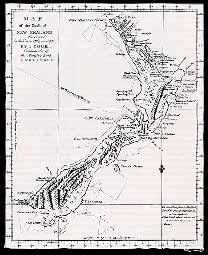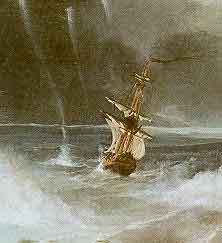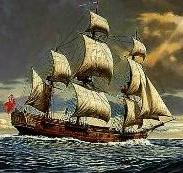
In 1772, Cook sailed from England on a second voyage, this time aboard a larger ship, the "HMS Resolution", and he planned to use New Zealand as a base from which to further explore the Pacific Ocean. To captain his second ship, "HMS Adventure", he appointed Tobias Furneaux.
The same year, Marc-Joseph Marion du Fresne anchored his ship "Mascarin" in Spirits Bay, in the North Island, and immediately claimed NZ for France, declaring it to be "France Australe" in the name of King Louis XV.

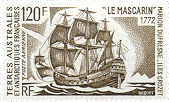
He
had recently sailed from Van Diemen's Land (now Tasmania),
being the first European to meet the aboriginals there, sharing with them a meal
of fish.
He is credited with discovering the tall and straight native New
Zealand tree, the "kauri", as perfect for ship's masts and spars.
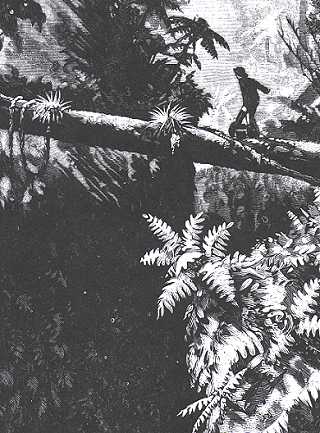
Du Fresne remarked how surprised he was to find red-haired Maori here in the Bay of Islands, some as fairskinned as his own sailors - in fact that it was uncanny.
After an hospitable 3 months, he, and 13 crewmen were suddenly ambushed by Maori, killed and eaten - but his second-in-command, Julien Crozet, extracted revenge by reportedly killing 250 villagers
It was Crozet who regarded Cook's maps as "of an exactitude and of a thoroughness of detail which astonished me beyond all powers of expression, and I doubt much whether the charts of our own French coasts are laid down with greater precision"
On the other side of the world, Cook had left England, sailed down the length of the world, and leaving Capetown, at the tip of Africa, to go south into polar seas, solid with icebergs - at one time he was only 75 miles from Antartica - losing contact with Furneaux in the process. He arrived back in New Zealand waters in 1774.
Here he met up with Furneaux, who had arrived a month earlier, and learnt that scurvy had incapicated many of the crew of "HMS Adventure".
Undeterred, Cook ordered that both ships would leave in a fortnight, and head across the Pacific in latitudes of mid-40's. If there were a large continent, they would find it. They didn't.
Sailing north, Cook and Furneaux came again to the familiar Polynesian islands, including Tahiti, and then taking a westerly course on a higher latitude than previously explored, Cook essentially sailed a square around the lower pacific Ocean.
On returning to New Zealand, a gale kept him from landfall for 13 days - detail below from William Hodges'
Again however, Furneaux and "HMS Adventure" had disappeared. Cook left a note for his second-in-command, buried in the sand at Queen Charlotte Sound, and sailed away, this time back down towards the southern polar seas.
Crossing the Antartic Circle, the stout ship ran the gaunlet of icebergs and icecliffs for months. Turning north and then south again, Cook sailed a gigantic zigzag in the lower Pacific, and then north again, running parallel to South America, he returned to the Equator, and back through the Polynesian islands, Nuie, Tonga, the New Hebrides - and in the process, he was to discover New Caledonia, hitherto unknown to Europeans, as well as Norfolk Island.
On arrival in New Zealand, he learnt the fate of Furneaux and "HMS Adventure". Furneaux had made it to land 5 days after Cook had left, had read Cook's message and decided to go back to England. Before he left however, a fight developed between Maori and crew, 2 natives being killed and 10 crew members, who were then eaten. Furneaux arrived back in England in 1774.
Cook could have also returned directly home, but he didn't. He sailed again across the Pacific, and rounded the treacherous South American Cape Horn, and up into the Atlantic. When he did arrive back in England, he had covered 70,000 miles, discovered 30 new islands, and lost not one man to scurvy.
In 1777 he was back at sea, aboard "HMS Resolution", still exploring the Pacific, from Hawaii to North America, Vancouver Island, Alaska and the Bering Strait. He never returned to New Zealand, meeting an untimely death in Hawaii.
Cook's impact on 18th century understanding of the Pacific, and of course New Zealand cannot be overstated. He definitively laid to rest any notion of a huge continent in the South Seas, he was instrumental in botanical, social and scientific advances, and his charting was so accurate that many of his maps are used today (see Crozet's comment above). In all, Cook spent 328 days in New Zealand.
In that same year, European sealers set up camp in the South Island, and probably helped introduced the influenza epidemic in 1790 that killed an estimated 2/3rds of the southern North Island population of Maori !
The estimated population at this time was Maori 100 to 200 thousand, and 50 Europeans. Forty years later, the European numbers were still small, an estimated 350.
In 1791, another island, called by the Moriori who lived there, Rekohu, was rediscovered and named the Chatham islands by Capt Broughton, aboard "HMS Chatham".
A Spanish navigator, Malaspina, weighed anchor at Dusky Sound, in 1793, and in this late period of the 18th century, whaling and sealing ships began to arrive in NZ from France, America, Spain, & Norway, as well as ships loading flax, timber and general trade.
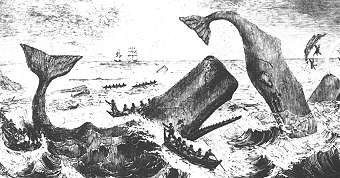
The 1809 massacre of the crew of the "Boyd" notwithstanding, this commerce was to grow.
The "Boyd" was a trading vessel, and spars were to be loaded aboard at Wangeroa. Te Puhi and some warriors, intent on avenging the ill treatment of a chief, Tara, ransacked the vessel and killed 66 crew and passengers aboard - a woman, boy and two children survived - and the ship was accidently ignited, killing Maori when a spark hit a powder barrel.

Unfortunately, return revenge by British seaman found the wrong person, Te Pahi, and they killed 30 villagers of the wrong tribe, and burned the village to the ground.
Europeans had a contraption that was highly desired by Maori - the musket - and they were soon acquired. They unleashed a war.
As well as liquor and debauchery, in the basically lawless European-influenced parts of the country.
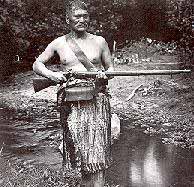
New Zealand.org.nz Homepage here
